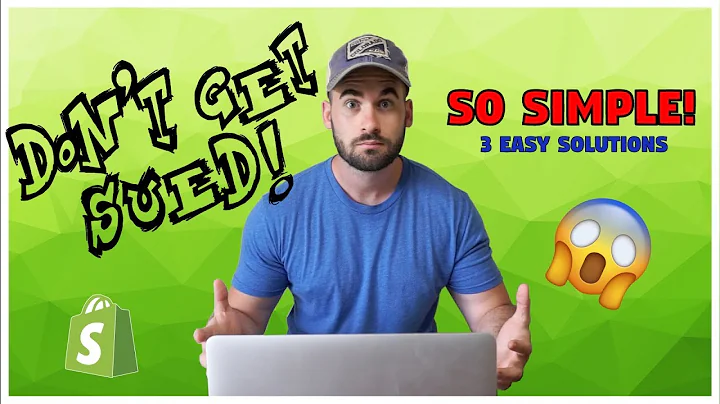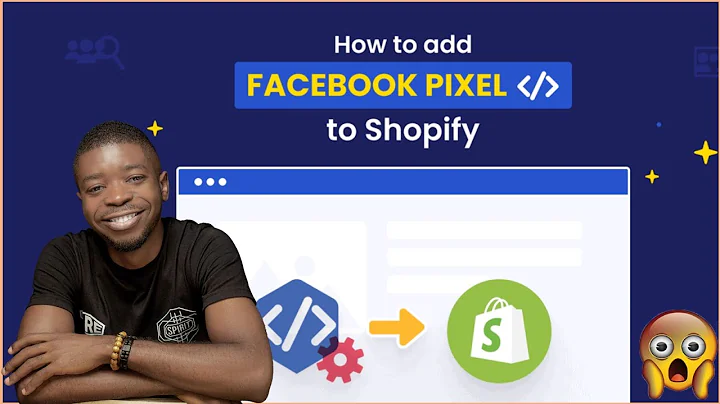From $0 to $10,000 in 10 Days: A Shopify Success Story
Table of Contents
- Introduction
- Day 1: Product Research
- 2.1 Using USAJobs Winning Product Section
- 2.2 Finding a Problem-Solving Product
- 2.3 Identifying Demand on Tick Tock
- Day 2: Building the Shopify Store
- 3.1 Designing the Product Page
- 3.2 Creating a Customized Add to Cart Page
- 3.3 Implementing Post-Purchase Upsell
- Advertising Strategy for the Challenge
- 4.1 Leveraging Tick Tock's Viral Potential
- 4.2 Using Instagram Reels and Pinterest
- 4.3 Testing YouTube Shorts
- Results after 10 Days
- 5.1 Social Media Performance
- 5.2 Revenue and Expenses
- 5.3 Factors Contributing to Success
- Conclusion
- FAQ
From Zero to Over $10,000 in 10 Days: A Shopify Drop Shipping Success Story
Welcome to my 10-day challenge of building a brand new Shopify Drop Shipping store and taking it from zero dollars to over ten thousand dollars! Throughout this challenge, I'll be sharing my entire process with you, from product research to advertising strategies. If you're interested in seeing how I achieve this goal, stick around till the end of this article!
Introduction
The goal of this challenge is to demonstrate the potential of the Shopify Drop Shipping business model. I'll guide you through each step I take to build a successful store from scratch, and reveal the strategies that help me achieve significant revenue in just 10 days. So, let's jump right into it!
Day 1: Product Research
On the first day of the challenge, I focused on finding a high-quality, in-demand product to sell. By utilizing the USAJobs winning product section, I gained access to valuable information about products that are already selling well. After browsing through various options, I came across a led portable makeup box that immediately caught my attention.
2.1 Using USAJobs Winning Product Section
USAJobs is a Drop Shipping supplier known for their expertise in identifying top-selling products. Their winning product section provides valuable insights into consumer preferences. By leveraging this resource, I was able to find a product with great potential.
2.2 Finding a Problem-Solving Product
The led portable makeup box I discovered solves a common problem faced by people who wear makeup. It offers a convenient solution for carrying makeup while being on the go. This makes it an attractive product with a large target audience. With a low cost of $19.87 from USAJobs, it presents an opportunity for substantial profit margin.
2.3 Identifying Demand on Tick Tock
To further validate the potential success of the led portable makeup box, I checked its popularity on Tick Tock. The product had a significant amount of demand on this platform, indicating a high level of interest among consumers. This confirmed my belief that it could be a winning product for my store.
Day 2: Building the Shopify Store
Now that I had identified a promising product, it was time to start building my Shopify store. Utilizing the free trial provided by Shopify, I focused on creating a well-designed and branded store that would attract customers.
3.1 Designing the Product Page
The product page plays a crucial role in convincing potential customers to make a purchase. I carefully curated images showcasing the led portable makeup box from multiple angles. Additionally, I highlighted its benefits, such as its portability and adjustable LED mirror. Clear product details, shipping information, and a customer review section were also included to build trust and credibility.
3.2 Creating a Customized Add to Cart Page
Taking advantage of the Shopify app, Up Cart, I customized the add to cart page to maximize conversions. The page featured a free shipping bar, indicating how close customers are to qualifying for free shipping. An upsell product was also added, offering customers the option to purchase an additional product to receive free shipping. This technique is proven to boost sales and increase average order value.
3.3 Implementing Post-Purchase Upsell
To further capitalize on the sales potential, I utilized the Shopify app, After Sell, to create a post-purchase upsell page. Once a customer purchased the led portable makeup box, they would be presented with an opportunity to purchase another related product. This strategy aims to increase the overall value of each customer's purchase, resulting in higher revenue.
Advertising Strategy for the Challenge
With the store set up and the product ready to sell, it was time to focus on driving traffic and generating sales. I developed a multi-platform advertising strategy, utilizing Tick Tock, Instagram Reels, Pinterest, and YouTube Shorts.
4.1 Leveraging Tick Tock's Viral Potential
Tick Tock has a unique viral potential that can significantly boost brand exposure. By creating and posting viral-worthy videos consistently, I aimed to attract a large audience. To optimize the chances of my videos going viral, I followed a specific hack. Within the first hour of creating a brand new Tick Tock account, I posted a viral video. This created a window of opportunity for my account to gain traction quickly.
4.2 Using Instagram Reels and Pinterest
While Tick Tock was the primary focus, I also explored other platforms such as Instagram Reels and Pinterest. I repurposed the same videos from Tick Tock and shared them on these platforms, hoping to reach a wider audience. However, the results on these platforms were moderate, with Tick Tock proving to be the most successful.
4.3 Testing YouTube Shorts
As an additional experiment, I decided to test YouTube Shorts. Unfortunately, the videos I posted on this platform did not gain significant views. This highlighted the importance of finding the right platform for your target audience and adapting your strategy accordingly.
Results after 10 Days
After 10 days of executing my advertising strategy, it was time to assess the results.
5.1 Social Media Performance
Tick Tock proved to be the standout platform, with several videos gaining impressive views. Instagram Reels and Pinterest did not perform as well, indicating that different platforms require tailored approaches. YouTube Shorts yielded minimal results.
5.2 Revenue and Expenses
Despite variations in social media performance, the Shopify Drop Shipping store generated $815.81 in revenue during the 10-day period. However, expenses must be considered, including Shopify and PayPal fees totaling $28.65, and product costs of $318.99. Ultimately, the total profit amounted to $496.82, with a profit margin of over 50%.
5.3 Factors Contributing to Success
Several factors contributed to the success of the store. Effective social media marketing, leveraging viral content, a high-ticket product, and the implementation of pre-purchase and post-purchase upsells all played significant roles in achieving these results.
Conclusion
This 10-day challenge showcases the potential of a well-executed Shopify Drop Shipping business. With the right strategies, entrepreneurs can generate significant revenue in a short period. By leveraging social media platforms and utilizing effective marketing techniques, it is possible to achieve impressive results.
If you're interested in learning more about building successful drop shipping stores, consider applying to my mentorship program. I provide in-depth guidance and strategies to help you replicate this success.
FAQ
Q: Can I achieve similar results without using Tick Tock?
A: While Tick Tock proved to be the most successful platform during this challenge, other social media platforms can also yield positive results. It's important to adapt your marketing strategies to each platform and explore various channels to reach your target audience effectively.
Q: Is the Shopify Drop Shipping business model profitable in the long run?
A: Yes, the Drop Shipping business model can be highly profitable with the right products, marketing strategies, and continuous adaptation. However, it requires ongoing effort to stay competitive in the market and maintain customer satisfaction.
Q: How can I identify high-demand products for my drop shipping store?
A: Utilize tools like USAJobs' winning product section, analyze trends on social media platforms, and conduct thorough market research. Additionally, consider products that solve a common problem or fulfill a specific need in the market.
Q: Are pre-purchase and post-purchase upsells effective strategies?
A: Yes, implementing pre-purchase and post-purchase upsells can significantly increase the average order value and boost overall sales. By offering relevant additional products, customers are more likely to make multiple purchases, increasing your revenue.
Q: How can I optimize my social media marketing for maximum exposure?
A: Consistency, quality content, leveraging trends, and engaging with your audience are essential in optimizing your social media marketing. Experiment with different platforms and monitor the performance to refine your strategies continually.


















